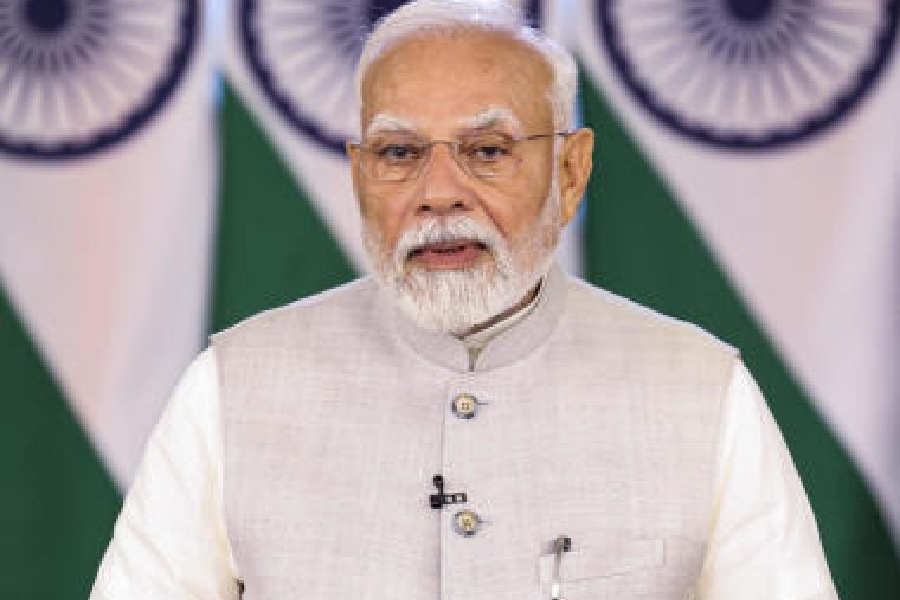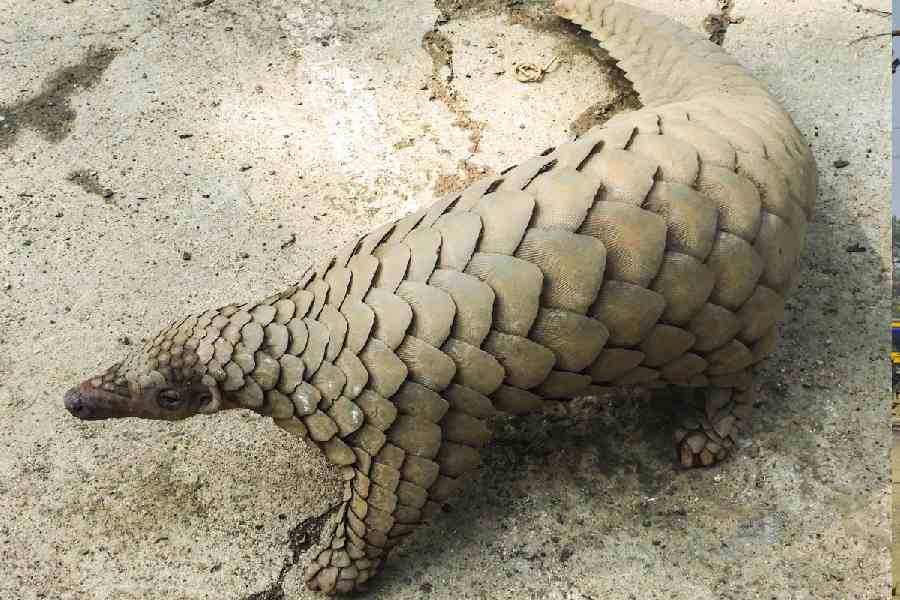|
|
The alternate nation of Abanindranath Tagore
By Debashish Banerji, Sage, Rs 995
The luminous clarity of Abanindranath Tagore’s writing leaves one unprepared for the almost impenetrable theoretical “complexification” in a discussion of his place in art history. Certainly, Debashish Banerji’s task is not simple. He goes against the traditional perception of the artist Abanindranath as committed to the deliberate creation of a nationalist art, proposing in its stead the figure of an artist mining past paintings and literature for techniques and subjects to create an art that would reflect his nuanced consciousness of the colonial encounter.
Abanindranath himself makes the job tricky. With his natural modesty, limpid tales, whimsical mischief, he resists the excavation of the depth and range of his erudition as well as glimpses into the degree of his self-consciousness as an artist. His intellectual richness is elusive; he discusses Bengal’s bratas with the same pristine elegance with which he writes on art and aesthetics. The gentle humour of his reminiscences would persuade anyone that everything in his life was accidental, just a result of happy circumstances, the stimulus offered by a bustling, creative family, and the encouragement and affection of unusual persons, the chief of these being his uncle, Rabindranath. To detach him from his self-projection and the hypnotic luminosity of his writing in order “to bring to light [the] otherwise concealed dimension of an alternate cultural nationalism” as Banerji attempts to do is no doubt a weighty project.
But the complete lack of felicity in Banerji’s writing, heralded by the book’s title, The Alternate Nation of Abanindranath Tagore, merely adds to the weight. Banerji is anxious to place Abanindranath within the complicated dynamics of the colonial cross-cultural encounter that breeds both resistance and mutual transformation. His project is to correct the pigeon-holing of Abanindranath’s art as part of the elitist creation of a modern cultural identity by uncovering and explaining the artist’s choice of popular forms that, Partha Mitter says in the Foreword, “amounted to no less than a communitarian critique of modernity”.
Banerji’s point of theoretical departure is subaltern studies, and his villain the modernity that subaltern history sees as having suppressed the social revolution, which should have followed the political one. In his anxiety, Banerji litters his text with names and strange expressions; while art historians are occasionally “referenced” (word Banerji’s), especially R. Siva Kumar, whose presence is felt even on the jacket, Partha Chatterjee, Dipesh Chakrabarty, Homi Bhabha, Sudipta Kaviraj, Pierre Bourdieu, Habermas, Foucault, Bakhtin, Gadamer, Derrida, all jostle for space among the dense foliage of Victor Turner’s ‘communitas’ and ‘liminality’, dizzying uses of the word, ‘communitarian’, verbal tics such as ‘habitus’, ‘multivocality’, ‘intersubjectivity’, ‘dialogic’, and sentences such as the following: “Addressing the subject of modernity, Abanindranath now sought to give expression to an ontological transcendence of this sense of passing through the use of cultural resources available to the national habitus as also homologously present to other cultural space-times arriving as new histories of belonging into the nation, region and home (p. 42).” The last is about the development of the artist’s technique of wash.
Banerji’s information is diverse, tying together familial, regional, national, Asian and Western strands of culture, politics, philosophy and history in the effort to place Abanindranath in a shifting, “intersubjective” context. He discusses each direction and each personality he considers relevant to the artist’s career, whether it is Vaishnavism, “Jorasanko flanerie”, Pre-Raphaelitism, Orientalism and so on as well as E.B. Havell, Rabindranath, Okakura and Gyanadanandini. Most relevant is his study of Abanindranath’s interest in forms such as the kirtan, jatra, brata, and their role in his art, as well as his analysis of the costumes and postures in the paintings, demonstrating the variety of faiths, crafts and livelihoods in the artist’s imagined worlds. These represent, according to Banerji, part of the “communitarian” undercutting of the elite nationalist project.
Is it unfair to expect art history not to let us forget the art — or our sense of the artist? For an artist as exploratory and inward as Abanindranath, the touch of theory must be feather-light. Some of Banerji’s insights do make sense of both art and artist, but his anxiety to make his point is stifling, as when he discusses the artist’s use of the Persian/Urdu nastaliq calligraphy to write Sanskrit or Bengali verses in the Bengali script in his Krishna Lila paintings.
Again, in his analysis of the medal-winning “Last days of Shah Jahan” in the context of the Delhi Durbar exhibition in 1903, one misses the artist’s own comment that he had poured into it his grief for his recently dead child. Maybe he had supplied the “bhav” or feeling that he had missed in the exquisitely painted crane he had once studied through Havell’s magnifying glass.
Banerji, an art historian who teaches in the US, is the artist’s great-grandson. Is that why he freely changes kutum katam, the artist’s own name for his tiny works of art, into katum kutum, and calls it “relatives-in-wood”?












